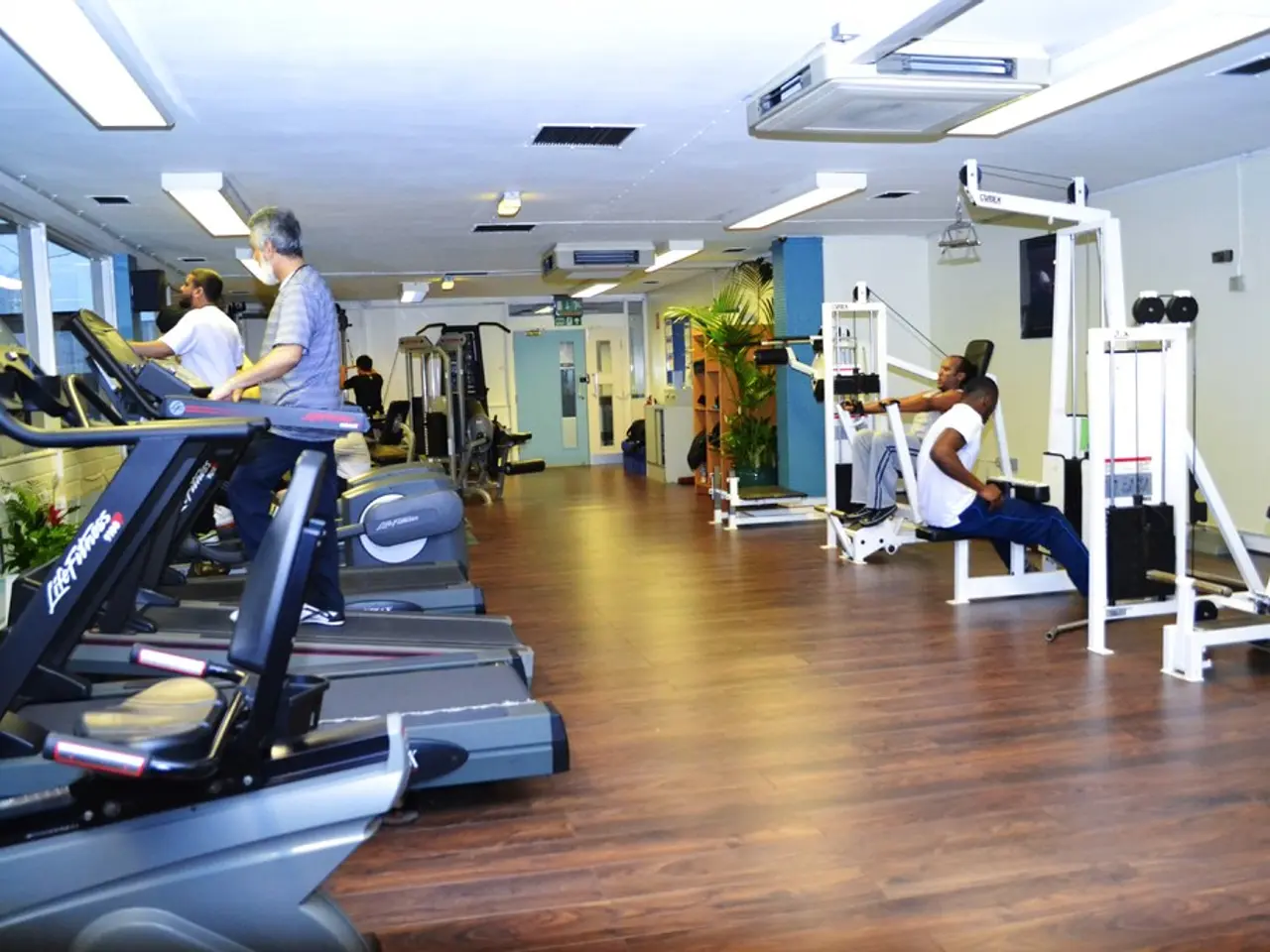Exploring the World of Breath-Holding Training: Balancing Benefits and Risks
Duration of Breath-hold from the Average Individual: Advantages and Disadvantages
Breath-holding training has gained popularity as a means to increase lung capacity and enhance oxygen efficiency. This practice, when done correctly, can offer numerous health benefits, but it's essential to understand the associated risks.
Benefits of Breath-Holding Training for Lung Capacity
Elite breath-holders have reported a significant increase in lung capacity and inspiratory muscle strength through structured training programs. These improvements can lead to better oxygen availability, increased endurance, reduced breathlessness, and improved neuromuscular coordination. Moreover, slow, diaphragmatic breathing accompanying breath-hold training can promote a relaxed nervous system state, beneficial for stress management in demanding activities.
Risks of Breath-Holding Training and Free Diving
Despite its benefits, breath-holding training carries potential risks, especially during deep dives with pressure changes. Lung injury, pulmonary barotrauma, and loss of consciousness are possible consequences if not practiced carefully. Asthmatics and individuals with underlying lung conditions should exercise caution, as they may be at risk of bronchospasm or air trapping. Rapid pressure changes can also lead to decompression sickness and gas embolism, necessitating stringent ascent control.
Safe Practice Guidelines for Breath-Holding and Free Diving
To minimize risks, it's crucial to follow progressive training, focusing on short, controlled holds rather than extreme "lung packing." Diaphragmatic breathing, slow and deep belly breathing, can enhance oxygen efficiency and maintain calmness under pressure. It's also advisable to never practice breath-holding alone, always having a trained buddy or instructor present. Avoiding hyperventilation before breath-holds is also essential, as it can delay the urge to breathe and potentially lead to unconsciousness underwater.
Mental training, such as developing CO2 tolerance and relaxation techniques, can help manage stress and ensure a calm, focused mindset during breath-holding. Individuals with respiratory or cardiovascular conditions should consult physicians familiar with diving medicine before engaging in breath-hold training or free diving. Safety protocols for ascent, maintaining controlled and slow ascents, are also vital to prevent lung barotrauma and decompression sickness.
In conclusion, breath-holding training, when approached with caution and proper guidance, can offer measurable benefits in lung capacity, oxygen availability, and endurance. For advanced free diving, coupling physical conditioning with mental control and rigorous safety measures is essential to minimize risks. Always remember, safety should be the primary concern when exploring the world of breath-holding training.
Before attempting to increase lung capacity, seek guidance from a healthcare professional and consider training with professional diving experts and those knowledgeable about lifesaving techniques. A person can hold their breath for 30 to 90 seconds, but factors such as smoking, underlying health conditions, and breath training can affect this time. It's important to remember that carbon dioxide levels within the body increase when holding the breath, triggering the involuntary reflex to start breathing again. If a person does not resume breathing, they may lose consciousness and, if not in a safe location, potentially drown.
Hypoxic blackouts are not limited to shallow depths and can happen during breath-holding training, competition races, and endurance swimming and diving. A person may experience a burning sensation in their lungs and diaphragm contraction if they hold their breath for a prolonged period. Hypoxic blackouts, often fatal, can occur during free diving when the brain is deprived of oxygen, often preceded by hyperventilation.
In 2015, there were reported accidental drownings due to dangerous underwater breath-holding behaviors, including social games and training exercises. Drowning can occur when a person is breath-holding underwater, and emergency lifesaving treatment may be necessary to prevent a fatal outcome.
Breath-holding training can be used for various purposes, such as advanced military training, free diving, swimming, singing, and playing musical instruments. However, it's essential to remember that holding the breath carries certain risks, such as drowning and fainting, which can cause injuries. Two men training for advanced military testing drowned due to reduced pressure from oxygen in their blood.
In essence, while breath-holding training offers numerous benefits, it's crucial to approach it with caution and understanding of the associated risks. Always prioritize safety and seek professional guidance to ensure a rewarding and safe experience.
- The improvements in lung capacity from breath-holding training can lead to better oxygen availability, increased endurance, and reduced breathlessness in various medical-conditions like asthma, COPD, and diabetes.
- Individuals with pre-existing respiratory conditions, such as atopic dermatitis or depression, which may also include anxiety and panic disorders, should consider seeking medical advice before engaging in breath-holding training.
- HIV, although not directly related to breath-holding, should be considered when discussing health-and-wellness and fitness-and-exercise, as the virus can impact respiratory-conditions and weaken the immune system.
- Progressive training is crucial in breath-holding, with a focus on short, controlled breath-holds to avoid extreme "lung packing" and its potential risks like decompression sickness and gas embolism.
- Mental preparation, including developing CO2 tolerance and relaxation techniques, can help manage stress and ensure a focused mindset during breath-holding, especially in high-pressure situations.
- To enhance oxygen efficiency and maintain calmness under pressure, slow, diaphragmatic breathing techniques can be employed during breath-holding training.
- Breath-holding training, just like any form of exercise, requires a preparatory approach, and health professionals familiar with diving medicine should be consulted before practicing it as a part of medical-conditions management.
- It is essential to prioritize safety by never practicing breath-holding alone, avoiding hyperventilation before breath-holds, and following proper ascent control to minimize the risk of drowning or accidental injury.




